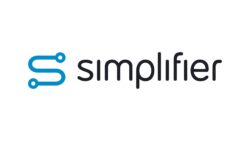When industrial companies digitalize their production processes, the focus is on the shopfloor, the heart of production. Hako GmbH, a manufacturer of municipal and cleaning technology (e.g., city and street cleaning), uses the low-code platform Simplifier to optimize its complex manufacturing processes, which often involve custom-tailored machines.
The challenge: Digitally optimizing complex processes on the shopfloor
The production of commercial machines for indoor and outdoor cleaning is an important business segment for Hako GmbH from Bad Oldesloe. The manufacturer of municipal and cleaning technology has four sites. They manufacture numerous standard products as well as individually configured devices for individual customers. One example is the site in Bad Oldesloe. Around 20,000 machines are manufactured here annually in two pre-assembly lines and twelve final assembly lines. The production processes require intensive communication and continuous data acquisition.
A large part of series production is manufactured in batch size 1. Assembly documentation, management of test documents and technical changes require a great deal of manual effort and maintenance of Excel spreadsheets. The company wanted to speed up and simplify these processes – with digital shopfloor management. Hako defined four requirements for this:
- Existing, well-functioning processes are consistently digitalized.
- The individual requirements are processed digitally.
- It must be easy to add new content and processes to the solution.
- All areas of shopfloor management have a standardized interface.
In order to remain as flexible as possible, Hako decided against using a ready-made software solution and instead opted for the Simplifier low-code platform.
The solution: A low-code platform accelerates the development of applications
The low-code approach uses graphical user interfaces for the development of applications, which can also be easily operated by non-programmers. On such a platform, they assemble applications from basic building blocks at the click of a mouse. The basic program logic can also be implemented in a similarly simple way.
Simplifier simplifies software development to the extent that developers can reach their goals more quickly, and even non-programmers can contribute to it. This is usually referred to as “citizen development”. This means that users in a company’s specialist departments design simple apps for their own purposes – in other words, they digitalize themselves. If additional, complex functions are required, software developers can add them via code.
The platform offers extensive functions for data integration. This makes it easy to exchange data with the IoT, the shopfloor or SAP ERP. It also supports industry protocols such as OPC UA or MQTT. The applications created with it run on all devices and support modern standards for accessibility.
Pilot project with four work areas.
Hako has initially launched a pilot project at its site in Bad Oldesloe. An important step in the implementation of digital shopfloor management is the digitalization of assembly documentation for the employees on the shop floor and the disruption documentation for support. Here, there are numerous documents such as work instructions, drawings, bills of materials, and support notes that are transitioned from paper format to “on-screen.”
SAP transactions were also integrated in order to link production control with SAP ERP and shopfloor management. The most important tool in shop floor management has also been digitized: a large digital team board in the form of a touch display for each assembly line. It shows different team KPIs in a dashboard, which are also displayed on an aggregated level for the entire site.
The result: Digital shopfloor management in all four sites
The pilot project has clearly demonstrated that workflow apps can be generated using the low-code platform, which helps relieve employees. By using the platform, they can concentrate on their core competencies and are not burdened with secondary tasks. At the same time, management has a much better overview of the entire production chain, as all the data recorded is quickly available in the ERP system.
Hako has rolled out the platform in the three other sites, reducing manual work and increasing efficiency through digital shopfloor management. Overall, it has become clear that low code significantly advances digitalization. The development of the workflows required little time and little developer capacity. Following training, employees are able to further develop the dashboards and workflows themselves.






